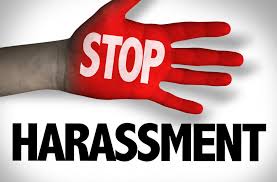Sexual harassment in the workplace remains a significant issue with far-reaching implications for individuals and organizations. Understanding the causal factors behind sexual harassment, and its effects, and implementing effective solutions is crucial for fostering safe, inclusive, and productive work environments.
Causal Factors of Sexual Harassment in the Workplace:

- Power Dynamics: A key causal factor of sexual harassment is the imbalance of power within the workplace. Perpetrators often exploit their positions of authority to engage in inappropriate behavior towards subordinates, creating an environment where victims feel vulnerable and unable to report.
- Gender Inequality: Societal norms and entrenched gender biases contribute to the prevalence of sexual harassment, with women disproportionately affected. Gender inequality perpetuates environments where harassment is more likely to occur and less likely to be addressed effectively.
- Organizational Culture: Workplace cultures that tolerate or downplay sexual harassment contribute to its perpetuation. Environments where disrespectful behavior is normalized or where reporting mechanisms are ineffective enable perpetrators and discourage victims from coming forward.
- Lack of Awareness: In some cases, individuals may not fully understand what constitutes sexual harassment, leading to inappropriate behavior going unchecked. This lack of awareness can perpetuate a cycle of harassment and create barriers to effective prevention and response.
- Socialization and Stereotypes: Cultural stereotypes about gender roles and sexuality can influence perceptions and behaviors in the workplace, contributing to the occurrence of sexual harassment. These stereotypes reinforce power imbalances and create environments where harassment is more likely to occur.
Effects of Sexual Harassment in the Workplace:

- Psychological Impact: Sexual harassment can have profound psychological effects on victims, including anxiety, depression, and post-traumatic stress disorder (PTSD). Victims may experience feelings of shame, guilt, and self-doubt, impacting their overall well-being and job performance.
- Career Implications: Victims of sexual harassment may face career repercussions, such as being passed over for promotions, experiencing job loss, or feeling compelled to leave their jobs altogether. This can result in financial instability and hinder professional growth and advancement.
- Organizational Culture: Sexual harassment undermines trust and morale within the workplace, leading to decreased employee engagement, productivity, and retention. It can damage the reputation of the organization and deter top talent from joining or staying with the company.
- Legal and Financial Consequences: Organizations that fail to address sexual harassment risk legal liabilities, including lawsuits, fines, and damage to their brand reputation. Legal proceedings can be costly and time-consuming, impacting the financial stability of the organization.
Solutions to Address Sexual Harassment in the Workplace:

- Policy Development and Enforcement: Establish clear and comprehensive policies prohibiting sexual harassment and outlining procedures for reporting and addressing incidents. Ensure that policies are communicated effectively to all employees and enforced consistently.
- Training and Education: Conduct regular training sessions on sexual harassment awareness and prevention to raise awareness among employees and promote a culture of respect and inclusion. Training should cover recognizing harassment, bystander intervention, and reporting procedures.
- Promotion of Gender Equality: Prioritize efforts to address gender inequality in the workplace, including promoting women to positions of leadership and fostering an inclusive culture that values diversity.
- Leadership Commitment: Demonstrate leadership commitment to zero tolerance for sexual harassment, hold perpetrators accountable, and provide support for victims. Leaders should lead by example and actively promote a culture of respect and accountability.
- Support for Victims: Provide support services for victims of sexual harassment, including access to counseling, legal assistance, and other resources. Create a supportive environment that encourages victims to come forward and ensures their well-being and recovery.
- Regular Evaluation and Feedback: Regularly evaluate the effectiveness of anti-harassment efforts through surveys, feedback mechanisms, and assessments. Use feedback to identify areas for improvement and ensure that policies and interventions remain relevant and impactful.
Conclusion:
Sexual harassment in the workplace is a complex and pervasive issue with profound effects on individuals and organizations. By addressing its causal factors, understanding its effects, and implementing effective solutions, organizations can create environments where all employees feel safe, respected, and valued. It requires a concerted effort from leadership, employees, and stakeholders to create lasting change and build workplaces that are free from harassment and discrimination.
Written by Agolo Uzorka Eugene, CEO/ Lead Consultant, Eugene + George Consulting LImited













